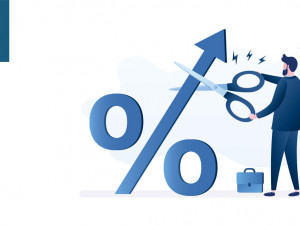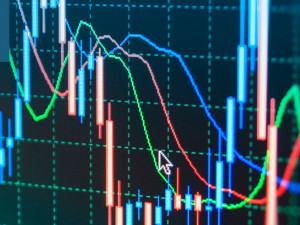
Inflation at fresh 40-year high
Morning mid-market rates – The majors
18th August: Highlights
- Food costs drive headline inflation over 10%
- Rising inflation creates flat retail sales
- Q2 growth revised lower
GBP – Bank of England to risk recession with another 50bp
The country now has the highest rate of inflation in the G7. The core rate of inflation, which records price rises with volatile items such as food and energy stripped out also rose, from 5.8% to 6.2%.
With the price of petrol now averaging around 168p per litre, having reached 200p earlier in the year, the cost of the shortages created by the ongoing conflict in Ukraine hit home.
As the outlook for the economy worsens with a consequent downwards revision to tax receipts, the Institute for Fiscal Studies warned that any permanent tax cuts that have been promised by Liz Truss should she win the Conservative Leadership Ballot could cause serious harm to the public purse.
Truss’ rival in the race, former Chancellor, has campaigned on the back of a more prudent attitude to taxation. Having raised the level of National Insurance in his last budget as Chancellor, Sunak believes that the inflationary effect of a cut in taxes should wait until price rises have been brought under control by the Bank of England.
Having seen the latest inflation report, Sunak’s campaign will have been boosted by his plans being seen as the more judicious approach. Nevertheless, the trade union movement continues to test the resolve of management in several key areas of the economy with pay demands that will see inflation continue to rise towards the level of 13% predicted recently by Bank of England Governor Andrew Bailey.
While Truss has championed a cut in taxation, her plans are less radical than the headlines suggest. She plans to reverse the recent rise in National Insurance and scrap a planned rise in Corporation tax.
Sunak is planning to reduce VAT on fuel bills, agreeing with the Central Bank that reducing high and rising inflation should be the priority.
Both candidates claim their plans are affordable, a fact that has now been disputed. The IFS believe that hidden from the view of voters will be cuts to public spending that will be needed to balance the books.
The continuing deterioration in the outlook for the economy will be exacerbated by the rise in inflation, with the Bank of England expected to hike interest rates by a further fifty basis points at its next meeting.
The housing market which was seeing signs of overheating as the Government provided support during the Pandemic will undoubtedly begin to suffer as mortgage interest rates rise. Borrowers are continuing to lock themselves in at current rates as deals become increasingly scarce.
Fears are growing that a rise in negative equity, which has not been seen since the early nineties, will lead to a collapse of prices.
The pound lost ground versus the dollar yesterday, although it is expected that there will be a certain number of buyers should it test the 1.20 level in the next few sessions. It fell to a low of 1.2028, but did not manage to recoup all its losses, closing at 1.2049.
Recommend our services and earn up to £75 per successful referral
USD – But pace of rises may slow
While there was no change to the expectation for a further increase at the next meeting, there was discussion about both a reduction in the size of the increase and for how much longer rates will be increased given the current slowdown in economic activity.
Fed Chairman Jerome Powell has continually pledged that the Central bank will hike until price rises have been brought under control.
The latest data on inflation that was released last week shows that although the rate of the rise in inflation appears to be slowing, the Fed is some distance away from being able to confirm that it is under control.
With the estimate for rates to reach neutral territory now achieved, the Fed will take rates into restrictive territory going forward, and this is expected to have a more radical effect on inflation.
The tightness of the labour market is of most concern to members of the FOMC. They plan to double the rate at which they are reducing the size of the Bank’s balance sheet. This will also tighten monetary policy.
The minutes still include the caveat that any changes to monetary policy are data dependent, but with inflation continuing to rise, output slowing and consumer confidence beginning to fall following a boost created by the country’s emergence from the Pandemic, they face an awkward few months.
There was talk of rates reaching a suitably restrictive level, although what that level will be remains to be seen.
No one could accuse the Fed of turning dovish although the minutes were certainly less hawkish than they have been of late, although Powell remains committed to correcting his error of last year when he described rising inflation as transitory.
While many Fed Chairmen are almost revered for some of their comments about monetary policy, Powell will be haunted by that comment long after he has left his position.
The minutes were neither sufficiently dovish nor hawkish to drive the dollar index, although it rose close to its recent highs. It reached a high of 106.88, closing at 106.63.
With the Fed still fretting about the labour market, today’s weekly jobless claims are beginning to take on greater significance. It is expected that headline claims will continue to rise to around 265k, while the four-week average remains above 250K.
Further evidence of a slowing economy will be seen in the release of data for existing home sales, which are expected to fall below five million.
EUR – Growth remained positive before ECB rate shock
While it is important, any growth seen in the region in the period between April and June will be rendered irrelevant by what is expected to be a significant contraction in the current quarter, precipitated by the ongoing conflict in Ukraine as well as the exponential rise in energy costs.
The rate of employment within the region has been holding up well as those returning to tier native countries following Brexit have found locating work easy.
However, that may be changing as data released yesterday indicated that the market may be about to turn as economic pressures grow. In the second quarter, unemployment rose by 2.3% having been falling constantly for the past few quarters.
This is likely to accelerate as the industrial and manufacturing sectors begin to suffer, particularly in the nations that have been receiving support from the ECB.
The continued rise in inflation that was seen in the UK in July is likely to be repeated in the Eurozone with the latest figures showing that the contribution made by energy to rising prices is falling. It is now below 40% for the first time in several months, which shows how the increasing price and scarcity of basic foodstuffs is rising.
Many supermarkets and wholesale outlets are having to increase prices weekly.
The ECB, having embarked upon a programme of rate rises, is expected to take interest rates into positive territory at its next meeting as speculation begins about what its own neutral rate will be.
Rates have been accommodative in the Eurozone for an exceptionally long time, and it is hard to imagine the effect restrictive rates would have on the economy, although the current thinning is that the Central Bank will stop tightening before that is seen.
The euro continues to flirt with parity, and the consensus view remains that it will end the year lower than it is currently. That means that it faces a sustained period of weakness.
It still attracts bargain hunters in thin trade on any approach to the 1.01 level. Yesterday it reached a low of 1.0145 and closed at 1.0180.
Inflation data will be released with the headline expected to be unchanged at 8.9%. This will see the fall in the cost of petrol offset by rising food prices. If there is to be any surprise, it is likely to be to the upside.

About Alan Hill
Alan has been involved in the FX market for more than 25 years and brings a wealth of experience to his content. His knowledge has been gained while trading through some of the most volatile periods of recent history. His commentary relies on an understanding of past events and how they will affect future market performance.”



